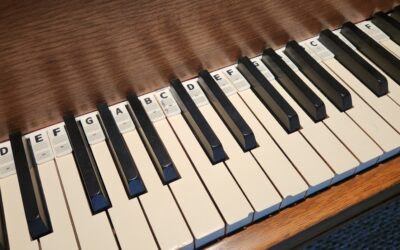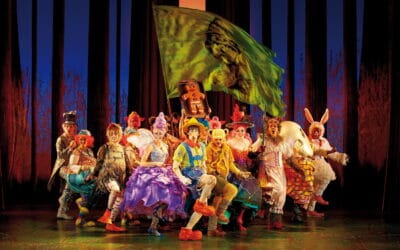I used to carry a coffee mug around the music building at Dickinson. On it was a lovely photo of several snowflakes, with the caption, “Always remember that you are unique. Just like everybody else.”
One of the things I love most about teaching is the way it reminds me (on my best days, of course) that, while we all may speak different languages and connect most readily with different metaphors and envy different role models, we all really are more alike than we are different. While in the course of a week I may see a couple dozen individual students—and to be sure, those couple dozen lessons often look very different from one another in goal, approach, and result—at their heart, all of those students struggle with what I think are three universal goals among artists. Every one of them struggles to:
- overcome their own self-doubt,
- claim and develop their incipient strength, and
- demonstrate that they are individuals with unique voices, who find value in existing art but also have something to contribute to art and its longevity.
Callbacks are this week for CASA’s next musical (Pippin), so the past several days have been full of the now-familiar mini-life-lesson scenario that I find auditions so often to be, at least in the educational settings where I’ve been privileged to serve. That scenario looks something like this:
- Potential cast member (PCM) nervously enters audition room. Coughs a little just to be sure we know s/he’s fighting the same congestion we’ve heard in the other 23 PCMs we’ve seen today, what with it being November and all. PCM also exhibits at least one (but usually several) of the following:
- shallow breathing
- trembling extremities
- pallid complexion and lips
- wobbly ankles caused by the brand-new but ill-fitting shoes PCM hopes will distract from any performance weaknesses
- “apologiarrhea”: the (usually situational) tendency to every response to a comment, observation, or question with “I’m sorry”
- Music Director (i.e., me) greets PCM, asks for charts, ascertains start/stop points, tempo, and cue, and begins to play. PCM stumbles through fervent but terrified rendition, finishing with a “thank you” that sounds more like another “I’m sorry.”
In the “real world,” where the point of an audition is to find the best actron to plug into the role to maximize the production’s first-week return on investment, this is where the audition process usually stops, at least for the PCM. They slink back to the second half of their split-shift at the diner, promising themselves that next time they’ll have found the right shoes, or the weather won’t be messing with their allergies so much, or the pianist won’t be quite so hard to follow.
But when I cast a show in an educational setting, I get to move past the self-doubt and the desperate attempts at feat-of-strength performances, and look for the individual behind the sweaty palms and the straining neck muscles. I get to ask “What do you love about the song you just sang?” and “What about this particular role really speaks to you?” and “If you could play any role on stage, who would it be?” That’s where I start to learn what this voice has to say to the world—and if I phrase the questions carefully enough, the PCM starts to learn how this role could be a vessel for their own artistry, not just another “gig.” This, in other words, is where the snowflake starts to stand out from the rest of the storm.
That’s a really, really important part of the audition process for me—the reminder to the PCM of their own value as an artist. But I think the most important part of the process comes later, after the cast list goes up. And the ones who gain the most from the process are the ones whose names don’t show up on that list, at least not where they’d hoped they’d be.
Today’s post on Dr. Noa Kageyama’s blog, “The Bulletproof Musician,” really digs into the value of those “failed” auditions, and how achieving the goals we thought we wanted isn’t always the best thing for us as artists (or human beings, frankly).
In a nutshell, “succeeding” at an audition—getting the role we wanted—may be a great ego boost, but it does less to help us improve for future opportunities than our “failed” auditions do. (And in fact, chances are good that we won’t do as well at our “dream role” as we hoped we would, which can end up being a downer in the long run if we’re not careful.)
So does this mean artists are doomed to lives of pessimism and self-doubt? Only if they do it wrong. If you ask me, “perfect” art is far less inspiring and empowering than the more common kind. That latter kind—art that’s about “flaws”—is, I believe, a very good thing for the world.





0 Comments